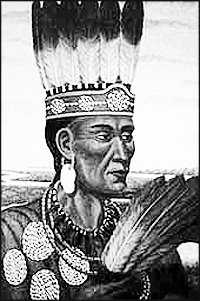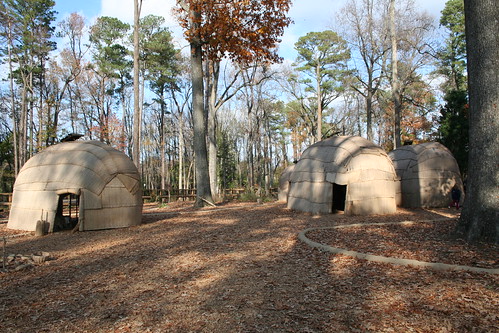
Pocahontas is an excellent historical fiction read for ages ten and up. Bruchac did his work in researching and writing this 147 page book that dispels many of the Disneyfied myths of Pocahontas and John Smith.
Pocahontas is told by both the eleven-year-old Powhatan girl, daughter of the Great Chief or Mamanatowic, of the Powhatan people and Captain John Smith of England. The story covers the time from the voyage to the scene in Mamanatowic’s village, in which John Smith misinterpreted what had happened and thinks he was saved by Pocahontas.
Pocahontas is her everyday name. Mataoka is the name only her closest friends and family use. And Amonute is her formal name, a name meaning favored one and a name she will no longer be known by when her father passes on. She lives in the village Werowocomoco with her father. Her mother died but her father’s sisters care for her. Her mother would not have lived in the same town as her daughter, but rather with her own family.
The Tassantassuk, or Outsiders, have arrived on the shores of Chesepiock, the great salt bay, in their big swan canoes and are building a camp in one of the worst and most foolish places to try and live. John Smith has been on board the Susan Constant as a prisoner but is released when his name is read as one of the leaders on the council.
The story then follows the two cultures as they clash against each other and learn about each other. The Powhatans keep the English alive despite the English being offensive, rude and hostile (not to mention aggressive and violent).
Mamanatowick destroyed the Chesepiock people because of a prophecy that foretold that a great nation would rise from the Great Salt Water Bay and bring an end to Mamanatowic’s kingdom. So, he made war on them and the Piankatanks and then attacked and removed the Kecough people from their land. Now, a new threat, a more dangerous threat with their powerful thunder sticks, has cropped up.

Pocahontas never meets John Smith until his capture by her Uncle and the ceremony in which her father adopts him as one of his own sons. She never goes to the white man’s camp without her father’s permission and with escorts. Mamanatowic thinks the ceremony has obligated John Smith to honor the Powhatan leader.
Captain Smith has his hands full getting the lazy men to work and to protect themselves and recover from assundry illnesses. He also engages in some political take overs and expeditions into the surrounding country. He is not captured until Dec. 1607 (they landed in April 1607). The Powhatan call him Little Red-Haired Warrior and he earns their respect with his courage and fighting skills.
We learn what it must have been like for both of them to be who they were and to live when they did. We learn that the Powhatan recognized five seasons: Cattapeuk (spring), Cohattayough (early summer), Nepinough (late summer), Taquitock (fall) and Cohonk (winter). “Everyone knows the earth prefers the touch of a woman’s hands,” Pcoahontas is told while she helps the resting women during their time in the Moon House.

When Smith is captured, Pocahontas hopes that he will join her people and help them get rid of the worthless and rude Tassantassuk. Smith lies to Mamanatowic about why the English are there and how they even ended up there. Pocahontas impulsively rushes forth when Smith’s head is lain upon the rocks in order to be the first to touch him so that she’ll always be the first of his relatives among her people.
When Smith returns to Jamestown, he is arrested and charged (but acquitted) for the deaths of the other men on the expedition up the Chickahominy River, in which he was captured. In September 1609, he is badly injured (possibly intentionally) and then someone attempts to assasinate him while he recovers. Pocahontas has become a frequent visitor and when he returns to England in October, she is told that he died.
Brucac includes in the end both a section on Early 17th Century English and the Powhatan Language. The author used all of Smith’s accounts in his research and also accounts of others. He gives us selected words and phrases in Powhatan, place names and Native names.
How to count to ten in Powhatan:
- necut
- ningh
- nuss
- yowgh
- paranske
- comotinch
- toppawass
- nusswash
- kekatawgh
- kaskeke
Bruchac primarily based his Native stories (of which preface Pocahontas’s chapters) on Powhatan and eastern Algonquin traditions and the works of Helen C. Rountree, in particular her 1989 book The Powhatan Indians of Virginia: Their Traditional Culture. He also had the help of Native Americans and the Powhatan’s and his own familiarity with the Abenaki language.
All of us have two ears; our Creator wishes us to remember there are two sides to every story, says Bruchac.
If you get the chance, visit the historic site of Jamestown. It is a fascinating trip. The fort was actually very small and built in a triangle and right on the river’s shore. It is definitely in the midst of a swamp.







